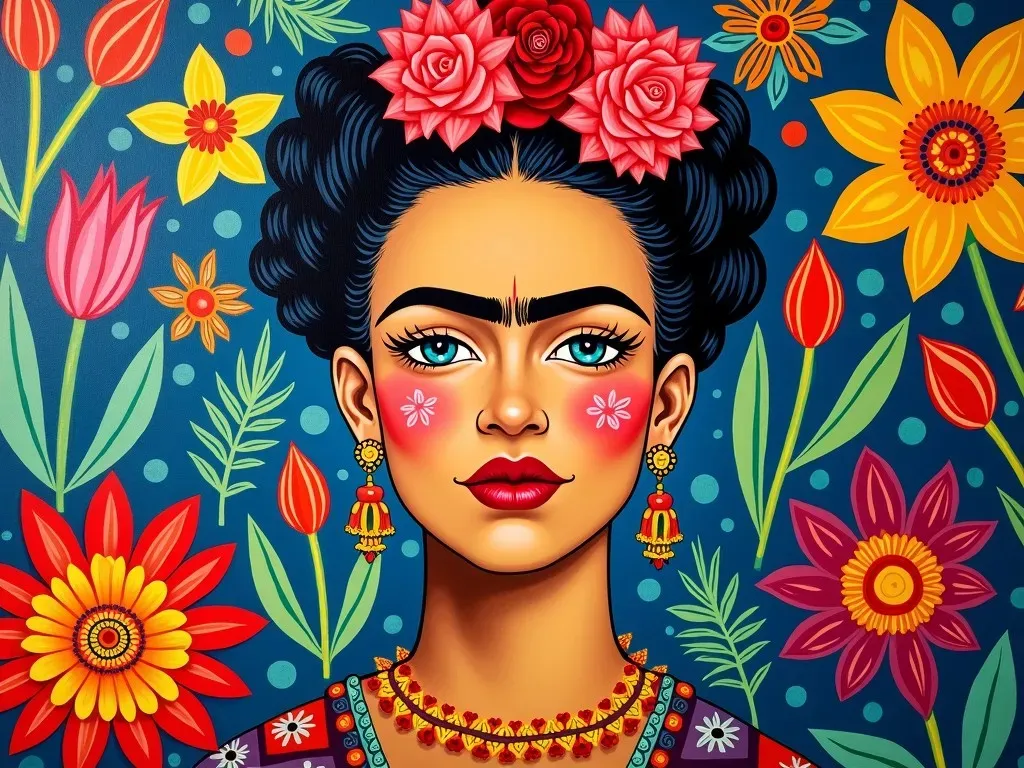Frida Kahlo original paintings for sale offer a unique opportunity for art lovers and collectors to own a piece of history from one of the most iconic artists of the 20th century. Known for her riveting self-portraits and vibrant depictions of Mexican culture, Kahlo’s work resonates with emotional depth and significance. With the art market increasingly valuing her pieces, now is an opportune time to explore the possibilities of adding a Frida Kahlo original painting to your collection.
The Allure of Frida Kahlo’s Original Works
Frida Kahlo, born in 1907 in Coyoacán, Mexico, is celebrated for her bold, emotive style that encapsulates her personal pain and Mexican heritage. Despite suffering from severe physical ailments throughout her life, including a traumatic bus accident in her youth, Kahlo’s art flourished. Her pieces often portray themes of identity, postcolonialism, and deeply personal narratives that invite viewers to explore their own emotions.
Valuable Insights into Frida Kahlo’s Paintings
-
Notable Facts:
- Kahlo began painting primarily during her recovery from her accident and continued throughout her life.
- The artist’s works were often autobiographical, reflecting her struggles and experiences.
- Kahlo is associated with the Surrealism movement but preferred to describe her art as rooted in reality, stating, "I never paint dreams or nightmares; I paint my own reality."
-
Current Market Trends:
- Recent years have seen a significant increase in the value of Kahlo’s artworks, with original pieces fetching millions at auction.
- In 2019, Christie’s sold her unfinished painting "Portrait of a Lady in White" for a staggering $5.83 million.
| Year | Auction House | Artwork | Sale Price |
|---|---|---|---|
| 2019 | Christie’s | Portrait of a Lady in White | $5.83 million |
| 2020 | Sotheby’s | Self-Portrait with Thorn Necklace | $8 million |
| 2021 | Phillips | The Frame | $8.4 million |
Pricing and Value of Frida Kahlo Paintings
If you’re considering investing in Frida Kahlo’s original paintings for sale, it’s essential to understand their pricing landscape:
- Entry-Level Prices: Smaller original works or mixed-media pieces can start anywhere from $20,000 to $30,000.
- Mid-Tier Prices: More significant pieces, including self-portraits or works that highlight her signature style, typically range between $100,000 and $1 million.
- High-End Collectibles: Major masterpieces of Kahlo’s, especially those with historical provenance or exceptional narratives, can command prices over $5 million.
Where to Find Frida Kahlo Original Paintings for Sale
Interested collectors can find original works through various credible channels:
-
Auctions:
- Sotheby’s: Specializes in high-value, original artworks and frequently features Kahlo’s pieces. Visit Sotheby’s.
- Christie’s: Known for auctioning historic pieces, including Kahlo’s remarkable artwork. Explore Christie’s.
-
Art Galleries:
- Reputable galleries often showcase available originals and may have private sales for serious collectors.
-
Online Marketplaces:
- Websites like Invaluable and Artsy provide platforms where one can find both original artworks and prints. Here are their links:
What to Consider When Purchasing Frida Kahlo Art
When exploring frida kahlo original paintings for sale, here are key factors to consider:
- Provenance: Research the history of ownership for artworks, as this can significantly impact value.
- Condition Reports: Ensure that the artwork is assessed for preservation, with documentation available.
- Authenticity: Consider obtaining a certificate of authenticity to guarantee its originality.
- Market Trends: Stay updated on auction results and sales trends to inform your purchasing decisions.
FAQ About Frida Kahlo Original Paintings
Q: How much are Frida Kahlo paintings worth today?
A: The worth of Frida Kahlo paintings varies dramatically based on size, subject matter, and market demand. Small original pieces may be valued at $20,000+, whereas significant works can fetch millions.
Q: Are there prints available of Kahlo’s work?
A: Yes, many galleries and online marketplaces offer prints of Kahlo’s work, which are generally more affordable than original paintings.
Q: What should I look for in a Frida Kahlo painting?
A: Look for elements typical of Kahlo’s style, such as colorful symbolism, emotive self-portraits, and clear ties to Mexican culture.
Q: Are Frida Kahlo paintings a good investment?
A: Given the rising value of her work and significant auction sales, many collectors regard Kahlo paintings as sound investments in the art market.
Conclusion (Placeholder Only)
In the world of art, acquiring an original Frida Kahlo painting not only adds aesthetic value to your collection but also serves as a testament to the resilience and ingenuity of an extraordinary artist. The potential for appreciation in value coupled with the rich narratives captured in her work makes Kahlo’s originals incredibly desirable. Whether you’re a seasoned collector or a first-time buyer, the chance to own a piece of Kahlo’s legacy is an opportunity not to be missed. Explore the available options now and step into the vibrant world of Frida Kahlo.
